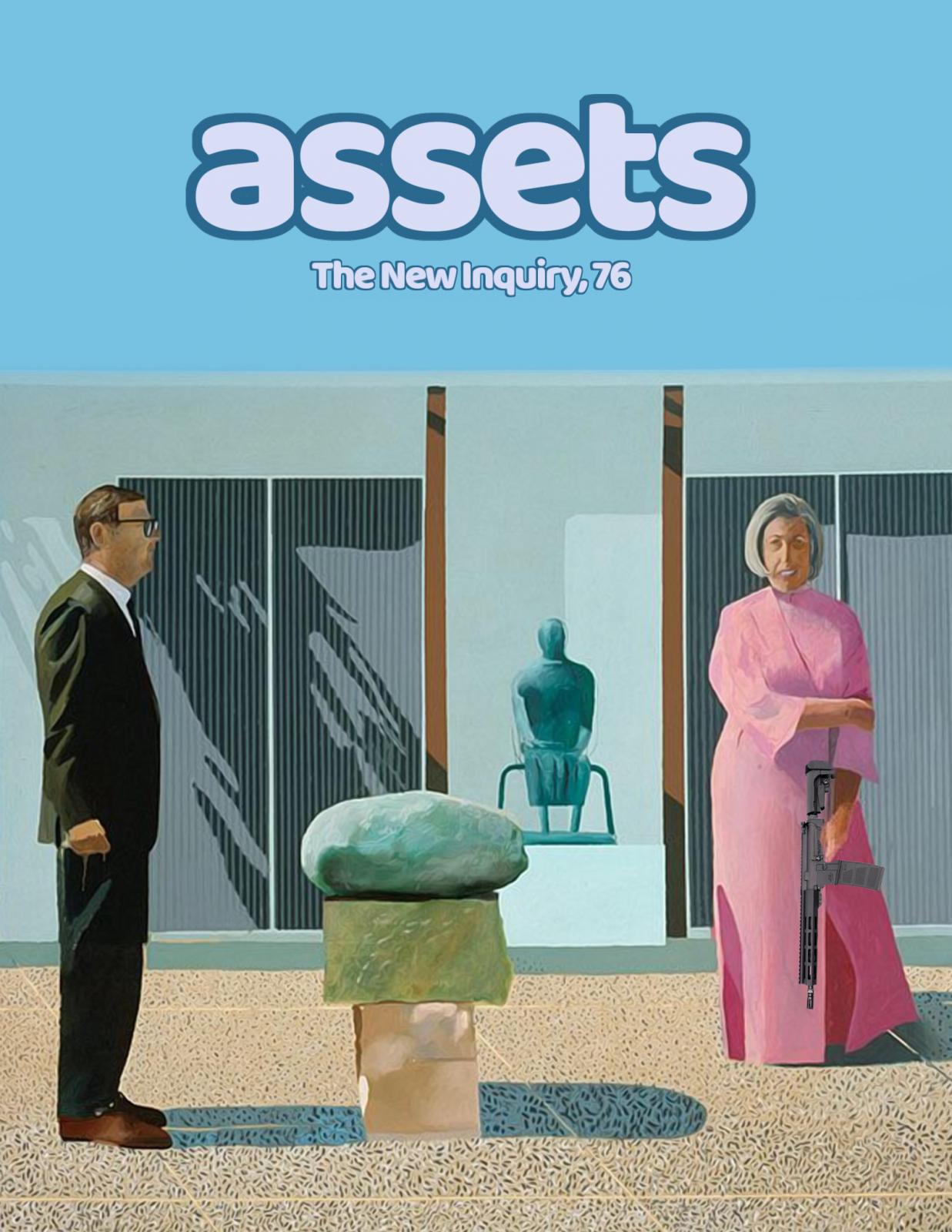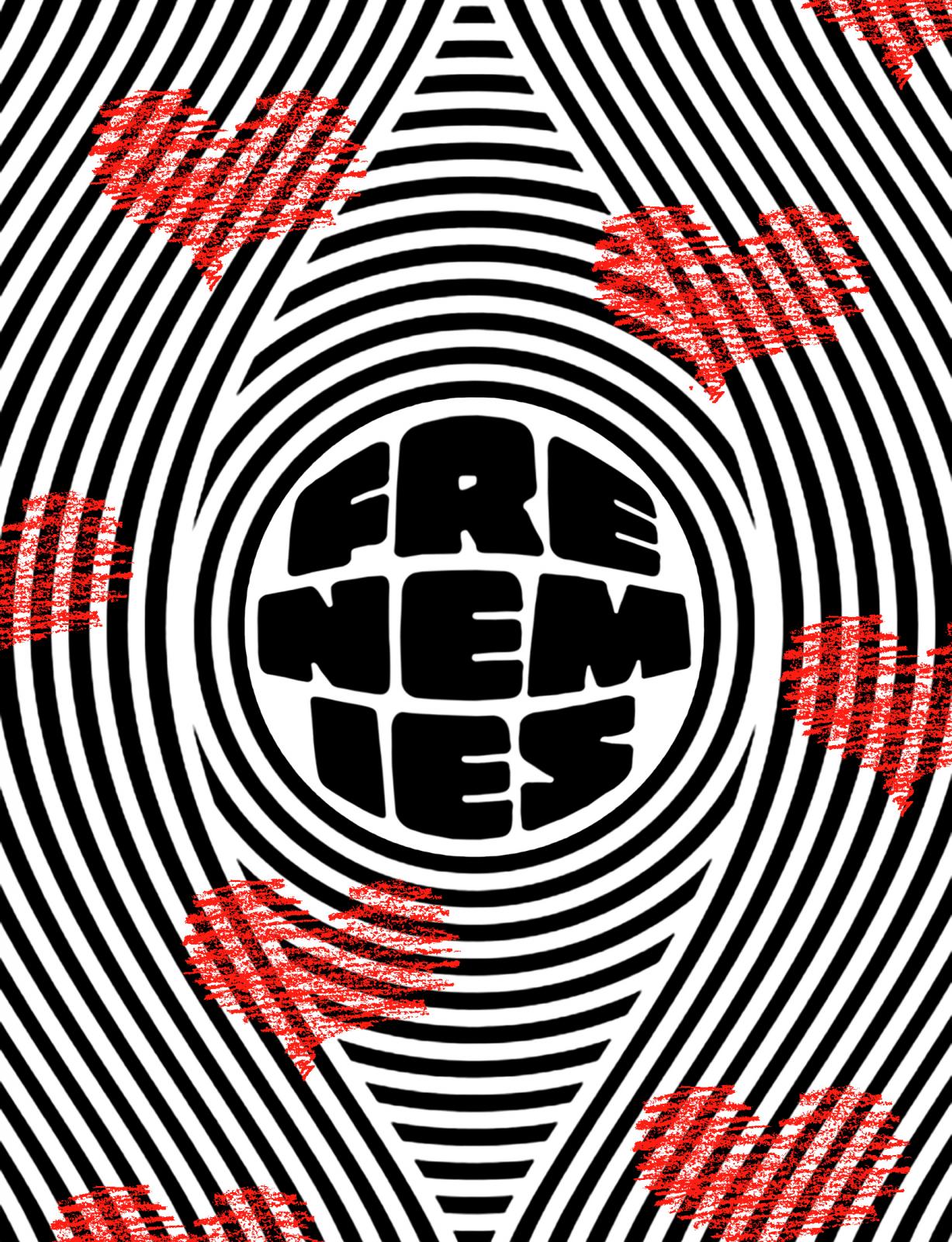Liquid
Editors' Note
MORE flexible than solids but less unwieldy than gas: Of all the states of matter, liquids appear most vulnerable to human manipulation. But who gets to do the manipulating has little to do with physics and everything to do with power. You can figure out who runs a society by noting who directs its liquid resources, and you can gauge people’s socioeconomic status by observing the ways they fit into its flows. Water in drought-stricken California was strictly rationed for many, but not for thirsty crops favored by wealthy investors. The consequences of fracking oil and gas reserves, from acidified aquifers to earthquakes, are unequally distributed in the name of “commonsense” economic growth. Even blood is rumored to be staunched in the flesh of the rich; financial institutions chase liquidity, opening up more channels for growing rivers of capital, and, by extension, opportunities for the ruling class to dominate.
It’s eerily appropriate that the people who have dedicated their lives to lubricating and profiting from global financial markets have taken command of the full arsenal of American power. The high-frequency trading firm Virtu Financial–founded and led by the current frontrunner for Secretary of the United States Army, Vincent Viola–boasts on its website that its employees provide “two-sided liquidity on over two hundred market centers around the world.” The hedge fund manager Carl Icahn, another billionaire member of the President-elect’s inner circle, reportedly bet on a billion dollar’s worth of U.S. equities the night of the election. “The S&P was so liquid–it was unbelievably liquid–the world was going nuts,” Icahn salivated to the press.
To these men, what’s liquid can always be bottled and sold. They forget its slipperiness: the way its streams always return. Our writers are careful to note the channels through which liquids flow as a tool of repression. But they also draw on its uncontrollable tendency to flood past borders and histories, drowning out pasts that roar into the present and future. Liquid can be a collaborative place for all sorts of organic and inorganic matters, whose contents can be either nourishing or toxic.
Ancestry looks like the sensibility that seeps through generations, but colonial states would rather rely on racist myths of “blood purity” to organize their populations and uphold settler power. Mark Trecka critiques the federal blood quantum laws used to sanction indigenous identity, and calls for an understanding of the “evanescent and narrative nature of identities” through the linguistic or territorial traditions tribes have used both to self-identify and as a source of resistance.
Information companies like IBM try to make sense of our collective sea of data by shaping our individual streams into coherent and categorizable identities. Drawing on the time they spent with the Snowden archive, Kate Crawford and Hito Steyerl discuss how the corporate-government surveillance complex has so much information on us that it is struggling under “its own profusion of data and prediction.” We crave recognition, and yet, if corporations misidentify us through clumsy correlations between credit scores and social media indexing, one solution might be to remain uncaptured.
Human history as inscribed by ruling class institutions “periodizes and indexes the past,” emphasizing “an imagined distinction between human and natural history,” as Jessica Lehman writes. She finds a strange resonance between postcolonial thought and ocean science to suggest the existence of an “ocean archive,” a global mode of history-making that emphasizes contingency, volatility, and multi-species collaboration. In the ocean archive, traces of earlier periods of imperialism and capitalism survive, but surface unpredictability.
Perhaps that’s why states fear the open seas, waters where they can’t always hold on to their sovereign image. Over the last century, governments have drastically reduced the size of oceans untouched by national jurisdiction with the help of mass surveillance. Audri Augenbraum analyzes the gamification of spying by transnational security agencies that rely on analysts monitoring ocean channels for illegal human activity on computers across the world. While outlets like the New York Times laud efforts to extend the rule of law into the oceans, Augenbraum counters that they’re little more than a new iteration of the age-old conquest for resources through the securitization of national borders.
It’s unsurprising that our alienation from the ocean also estranges us from the people we associate it with. The global dispossessed are more readily associated with the terrors of the sea, such as drowning and isolation, so that their suffering remains an abstraction for the global rich. “It is easy to admire the immigrant who crosses angry waters to make it to this country,” writes Karla Cornejo Villavicencio, and to “recognize in the immigrant something we value in ourselves, something we camouflage as belonging to the human spirit.” But even this faux-empathy evaporates after migrants reach land, where xenophobic institutions and customs push many to early deaths.
Saturating the environment, just like weather, racism is a totalizing atmosphere for Black people in America. In an essay excerpted from her 2016 book, In The Wake, Christina Sharpe considers the ways this “weather” circulates from the era of legal slavery up until today. “When the only certainty is the weather that produces a pervasive climate of anti-blackness,” she writes, “what must we know in order to move through these environments in which the push is always toward Black death?”
Black people destined for slavery would sometimes drown themselves or their children to avoid such a fate–an act both destructive and liberating. Sophie Lewis looks to water not as a romantic symbol of universal regeneration, but as a resource that is at once life-giving and poisonous. She calls for an “amniotechnics,” a praxis at the intersection of water rights and reproductive justice that recognizes water as a frenemy, something we must protect but also something we must protect ourselves from.
In our Liquid issue, the future is wet. Dive in.
Featuring
-
Editors' Note, Vol. 58: Liquid
-
In the Water
-
The Weather
-
Data Streams
-
Amniotechnics
-
The Enemy of All Mankind
-
Seeping Through The Pages
-
Blue History





